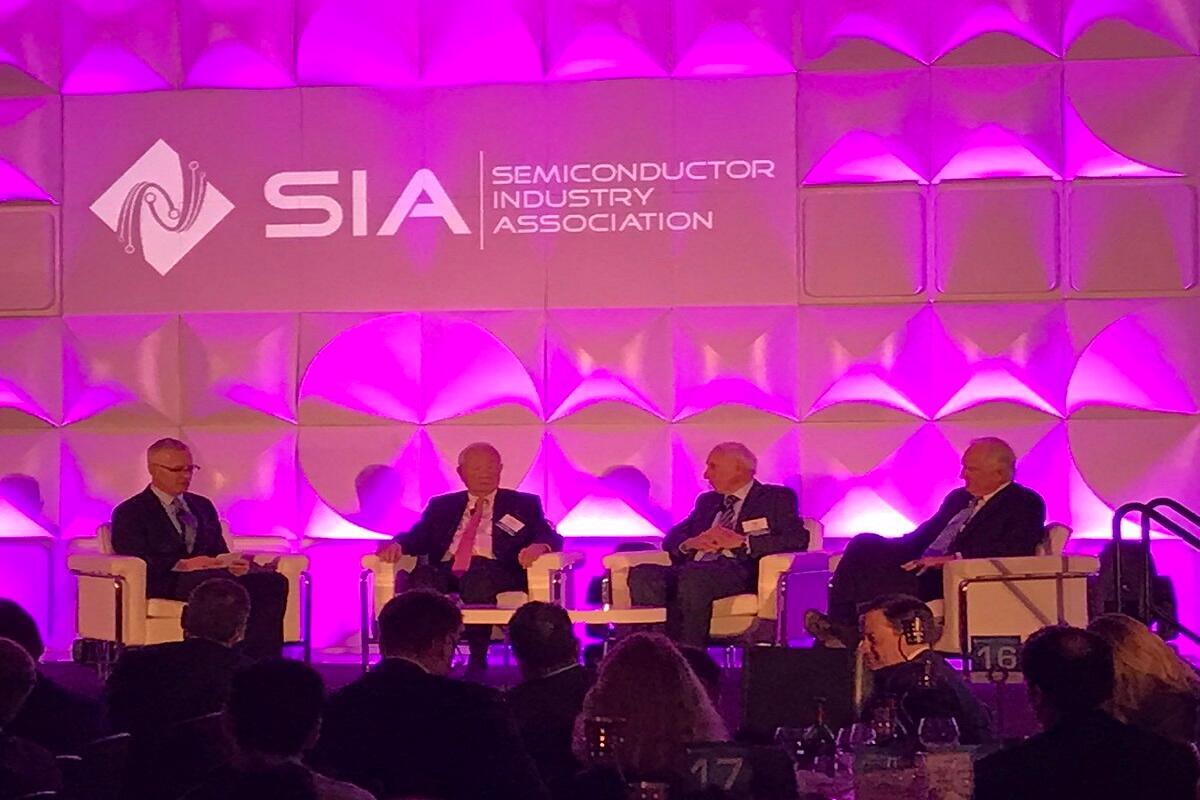Veterans optimistic of chip scaling at SIA event
Article By : Rick Merritt

Industry veterans discussed at annual SIA dinner what a breakthrough lithography system will do for the chip industry in the next 10 years.
Every new path comes with challenges. Engineeers, especially, will have to face new challenges as the chip industry widens its scope of market. Veterans spoke of such issues at an annual gathering of the Semiconductor Industry Association where expert Martin van den Brink discussed a lithography system that could further advances in the next decade.
In a panel discussion with other industry veterans, TSMC chairman Morris Chang expressed optimism for continued advances in chip scaling. However, he noted the industry is maturing and advised young electrical engineers to seek their futures in fields related to software, computer science and the Internet.
![[Morris Chang headshot cr]](/wp-content/uploads/sites/2/2020/04/Morris_Chang_headshot_cr.jpg)
TSMC chairman Morris Chang speaking at the SIA.
“The requirements for fab engineers will be pretty stable for a while,” said Chang who founded TSMC as the world’s first dedicated chip factory. “Our struggle for higher density will go on for at least a decade, until the mid-2020s through the 3nm node — I think we will go that far at least,” he said.
Another panelist, Ray Stata, co-founder of Analog Devices Inc., suggested a crisis is looming in the electrical engineering profession, but expressed hopes for technology advances beyond chip scaling.
![[Ray Stata headshot cr]](/wp-content/uploads/sites/2/2020/04/Ray_Stata_headshot_cr.jpg)
Analog Devices co-founder Ray Stata points out the challenges for EE departments.
“EE departments are shrinking, yet we need trained people,” Stata said. “One of our challenges is we are not going to get as many EEs as we used to get, so [industry] may have to take on more of the burden of education and be in the face of universities so they know our needs,” he said.
Stata pointed to an incubator at MIT as one of the vehicles to help bolster flagging investments in semiconductor startups. The former chief executive turned investor said systems-level combinations of existing technologies will help advance an electronics industry previously focused on components.
“Smartphones are already there…[but the] analogue [sector] is still in the midst of that transition,” he said.
![[Craig Barrett headshot cr]](/wp-content/uploads/sites/2/2020/04/Craig_Barrett_headshot_cr.jpg)
Panellist and former Intel executive Craig Barrett at the SIA dinner.
Former Intel chief executive Craig Barrett was the most bullish of the panelists.
“The marriage of electronics and photonics is just starting, and there’s a huge opportunity there,” Barrett said. “The marriage of electronics and biology hasn’t even started yet – there’s immense opportunity everywhere,” he said.
“When I joined Intel people said Moore’s law was on its last legs, we’ve always had just three or four more generations to go,” Barrett added.
“Someone will figure out how to make the next electronic switch, and that will change the world, so like [Intel co-founder] Robert Noyce said, forget about history, go out and do something wonderful,” he said.
As if responding to that call, Martin van den Brink, the chief technologist of ASML, promised to deliver by 2024 an extreme ultraviolet (EUV) lithography system that can print 0.45 ppps. The recently announced high numerical aperture system will be able to produce as many as 200 wph, he said in a talk after receiving the SIA Noyce award.
By contrast, the first integrated circuits were made in 1958 using a process that printed just 50 pixels, van den Brink said. By the time ASML was formed and he joined as one of its first employees in 1984, systems were printing 61 mps, he noted.
“Moore’s law will not stop because we have smart engineers trying to move the industry forward,” he added.
“Without him, we would have not followed Moore’s law this far or have hope of going to 7nm and below,” said John Kelly III, senior vice president of cognitive systems and research at IBM in giving van den Brink the award for advancing lithography.
“The most risky and important bet Martin and his company has placed is on EUV, and progress in EUV in the last several years has been stunning,” Kelly added.
This article was first published on EE Times.
Subscribe to Newsletter
Test Qr code text s ss


